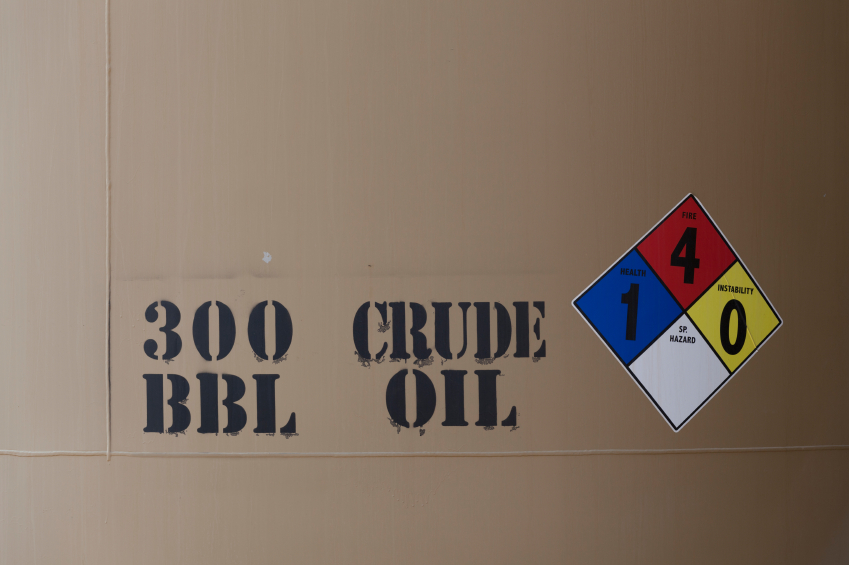
|
The June 1, 2016, deadline for employers to update alternative workplace labeling and their hazard communication program as necessary is fast approaching.
Yesterday we reviewed the requirements for GHS-compliant labels for shipping or transporting containers. Today we will consider the employer’s responsibility for maintaining labels on shipped containers and the options for secondary/workplace container labeling.
Under HazCom, an "employer" is defined as a person engaged in a business where chemicals are either used, distributed, or are produced for use or distribution, including a contractor or subcontractor.
Employers that store and use chemicals but do not produce or import them do not have to comply with the requirement to evaluate and classify the hazards of those chemicals; they must have a workplace program and a system in place for communicating information to their workers. "Use" in the context of HazCom means to package, handle, react, emit, extract, generate as a by-product, or transfer.
Under the HazCom GHS rules, employers must have a workplace labeling system in place by June 1, 2016, that is consistent with the GHS labeling system.
Note: Employers were required to train workers on the GHS labels elements and the safety data sheet (SDS) format by December 1, 2013.
Join us on Thursday, January 21, for our in-depth webinar, Hazardous Materials: Money-Saving Strategies for Achieving Alignment with International Standards
What About Shipped Containers?
If you are an employer under HazCom, you are responsible for maintaining labels on containers that you receive so the labels are legible and the pertinent information—such as hazards and directions for use—are not defaced or removed in any way. You are not responsible for updating labels on shipped containers, even if the shipped containers are not GHS-compliant. However, you must relabel containers if the labels are removed or defaced.
If you become aware of newly identified hazards that are not disclosed on the label, you must ensure that your workers are aware of the hazards.
What About Secondary, or Workplace, Containers?
You still have the option of creating your own workplace labels. If you have a workplace system that complies with the pre-GHS HazCom requirements, you may continue to use this system instead of the label from a manufacturer, importer, or distributer as long as your workers have immediate access to all the information about the hazards of the chemical. Workplace labels must be in English, but other languages may be added if applicable. You may also add instructional symbols not included in OSHA’s GHS pictograms—for example, a person with goggles to indicate that goggles must be worn while handling a given chemical.
If you choose to use the GHS pictograms found at 29 CFR 1910.1200 Appendix C for your workplace labels, the pictograms may have a black border instead of the red border required for containers that are shipped.
If you choose to use an alternative label system, all information supplied on the alternative labels must be consistent with the GHS label system—for example, there must be no conflicting hazard statement and pictogram.
What About NFPA and HMIS Labels?
If your secondary, or workplace, containers have National Fire Protection Association (NFPA) 704 Hazard Rating and the Hazardous Material Information System (HMIS) labels on them, you will not need to peel off the old labels; they are useful for first responders and those planning for emergency response. But they are no longer in compliance with GHS labeling—informing workers about the hazards of chemicals. It will still be okay to have NFPA and HMIS labels as long as they are consistent with the GHS labeling system. You could also have GHS labels on the same containers with NFPA or HMIS labels.
Like the NFPA/HMIS, the GHS standard assigns numerical ranking to hazard levels. However, the two systems are the opposite: NFPA/HMIS rank 1 as the lowest hazard level, and GHS ranks 1 as the highest. This conflicting approach does not affect labeling, as the hazard ranking by number does not appear on a GHS-compliant label. However, the difference could cause confusion when reading the SDS or attempting to create labels without proper training.
A best practice is to label your secondary workplace containers with the same GHS label information that came on the shipped container.
Are you ready for the January 1, 2016 effective date of the new final rule on hazardous materials? Click here to learn more!
What About Outdated Labels?
Any time a chemical manufacturer, importer, or distributor becomes aware of any significant new information about the hazards of a chemical, the labels for the chemical must be revised within 6 months of becoming aware of the new information. You must also ensure that labels on containers of hazardous chemicals contain the new information.

Thanks for sharing this nice post. A country may or may not choose to adopt GHS guidelines. It may adopt the full set or incorporate only a part of the guidelines into their own set of regulations. Over 65 countries have voluntarily adopted or are adopting GHS guidelines in part or full.